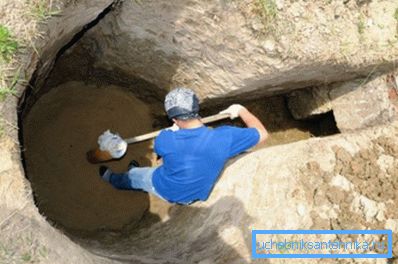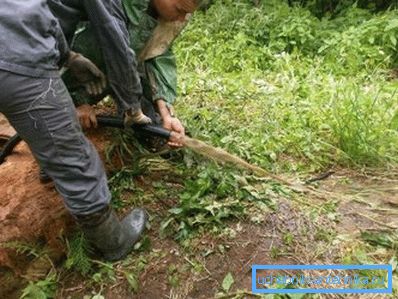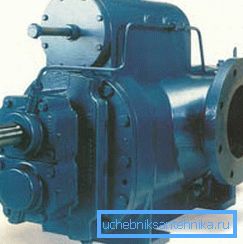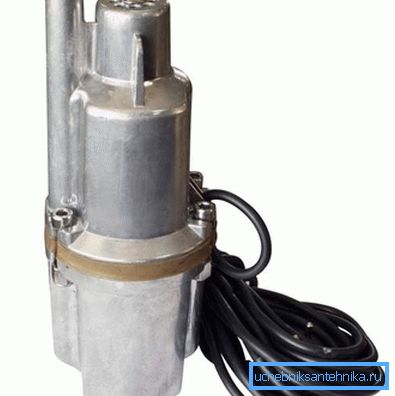How to shake a hole on the clay - clean yourself
Today it is precisely known that the volumes of fresh water located below the surface of the earth are several times higher than the volumes of water in the surface reservoirs of the planet.
This knowledge and modern technologies allow land owners to organize their own water source by drilling deep wells and pumping fluid from aquifers.

Well cleaning
If the suburban area is used exclusively for rest on the weekends in the warm season, the presence of a well is not necessary, since you can bring water supplies for several days. But if the plot is used for growing vegetables, fruits, flowers and long-term living, then a permanent source of fresh water is essential for watering, cooking and personal hyena.
Having your own well gives the site owner a number of significant advantages:
- independence from central water supply systems;
- uninterrupted supply of water in the right quantity at any time;
- water purity, since the liquid passes through natural natural filters and is saturated with necessary trace elements.
However, the presence of such a source requires regular maintenance and preventive measures, without which the well will no longer perform its function. The most frequent reason for the inoperability of a well is its silting and gradual filling with clay, as a result of which the clay overlaps the aquifer, and the flow of water gradually stops.
In such cases, the owners of the sites raises the question: how to clean the well from clay and restore its performance.
There are two ways to solve the problem:
- call a team of specialists;
- do the cleaning by hand.

If you do not have the time, the desire, the necessary equipment and relevant knowledge, it is best to call a professional team of masters who will perform this work quickly and efficiently, but the price for such a service can range from 10 to 70 thousand rubles, depending on the type and depth of the well. . You can do the cleaning yourself, this will allow you not only to save money, but also to get the necessary experience and theoretical knowledge.
Causes of clogging
Before pumping a well from clay, it is advisable to determine the cause of its pollution and, if possible, take measures to eliminate it.
The main causes of clay clogging are:
- improper pipe installation. The intake part of the pipe may not be installed in the aquifer zone;
- small consumption. If the well is rarely used and a small amount of fluid is pumped out, then the silting rate will increase many times;
- use of an external rotary pump. Such a pump takes water from the upper part of the mine, which contributes to the accumulation of clay at the bottom;

- using a well filter whose diameter is smaller than the pipe diameter and it does not allow to immerse the pump to the bottom of the mine;
- use of a deep-well suction pump;
Depending on the type and depth of the well, cleaning can take from 12 hours to several weeks.
Well pumping
To clean a clogged well with your own hands, several methods are used:
- cleaning the well from the clay pipe (shells, see photo);
- vibrating pump with nozzle;
- two pumps (deep and rotary);
All of the above methods can be applied both individually and alternately, depending on the degree of clogging and the depth of the mine.
Cleaning with zhelonka

If you have a tool and desire, you can make a similar design yourself and it will serve you for quite a long time.
Before cleaning the water from the well from the clay with the help of zhelonka, it is necessary to get a submersible pump and completely free the mine from foreign objects. The shell is securely fastened to a strong metal cable or rope and smoothly lowered to the bottom. After it has reached the bottom, it is enough to raise the scum by 40-50 centimeters and drastically lower it under its own weight.
From a sharp lowering upon impact on the bottom, the clay starts to move and its particles fill the space. With a sharp lowering, the metal ball opens the intake channel, and water and clay enter the internal cavity of the yolk. When lifting, the ball closes the channel, and dirty water remains in the cylinder. We repeat such movements 2-3 times and slowly raise the cylinder to the surface.
Each such procedure raises approximately 250-500 grams of clay. This method of cleaning a well is time consuming, but in practice it turns out to be effective.
Cleaning with a vibration pump

Cleaning a well with a vibration pump (shown in the photo) is considered the simplest and fairly fast option. This method is used in all forms, especially in mines with a narrowed receiver, where cleaning with a conventional submersible pump is not possible.
Tip! Before cleaning the well from clay in this way, it is necessary to purchase a pump with a protruding water intake in the lower part of the body. A strong durit or rubber hose is put on this water intake and securely fastened with metal cuffs.
The length of the hose may vary depending on the size of the narrowed part. The hose must have stiffness and not bend when resting in the ground. The pump is lowered to contact with the bottom of the mine, then lifted by 5-10 centimeters and include.
The hose collects silt overlay and pushes it out to the surface, however, in this mode of operation, the pump can quickly fail due to clogged valves and heavy loads. To do this, it is recommended to periodically get it out of the mine and rinse it with clean water.
Cleaning with two pumps
The two-pump method is used for flushing the well and is time consuming, but the whole process takes place almost without your participation.
Before rinsing the well from clay in this way, it is recommended to prepare in advance:
- large water tank with a volume of 200-300 liters;
- centrifugal pump that will pump water into the well;

- submersible pump for pumping water.

The principle of this method is that the centrifugal pump from the tank will supply pressurized water through a hose to the bottom of the well, washing away the clay deposits. The submersible pump will pump the water with the washed clay back into the tank. Thus, you get a closed flushing system.
It is desirable that both pumps have about the same performance. The submersible pump must be raised 10-15 centimeters from the bottom of the well. At the immersed end of the discharge hose, you must tie a load or put on a metal tube so that its end does not wrap and is directed clearly at the bottom of the shaft. It is advisable to put a filter on the suction hose of a centrifugal pump so that small stones or sand do not accidentally get into the pump.
Conclusion
For flushing, experts recommend the use of cheap deep well pumps, and for regular use more expensive. The instructions described above can be used to flush any kind of shallow and medium wells with varying degrees of contamination with sand, mud or clay.
Before starting work, be sure to watch the video in this article.